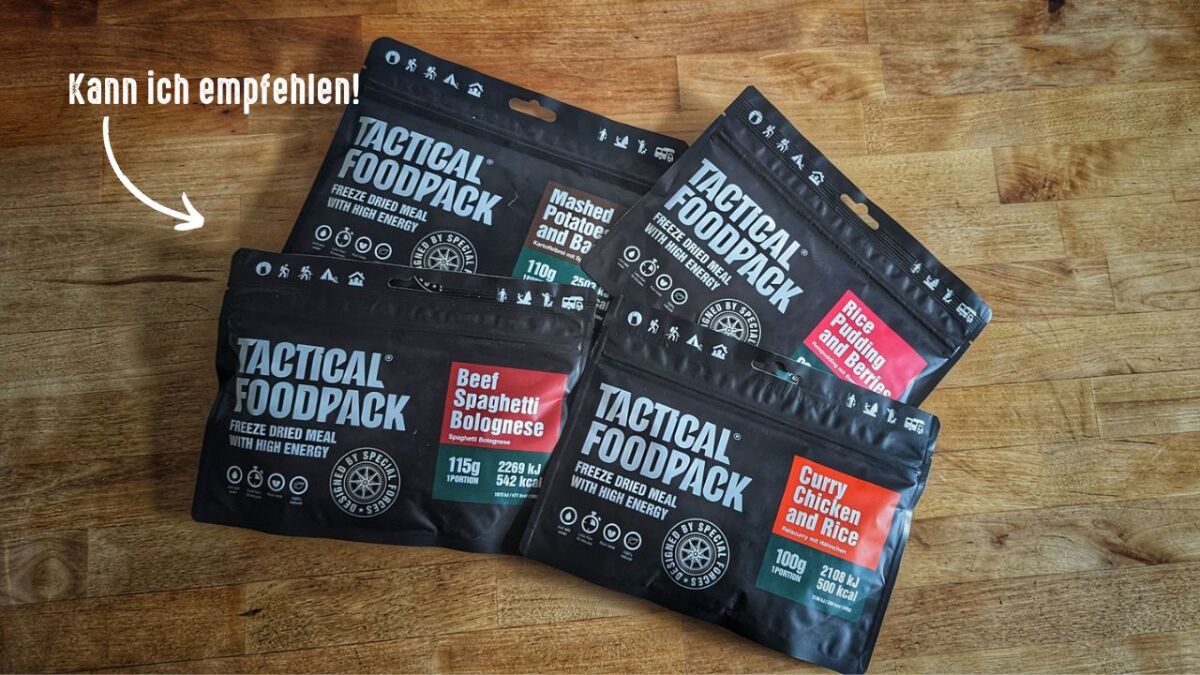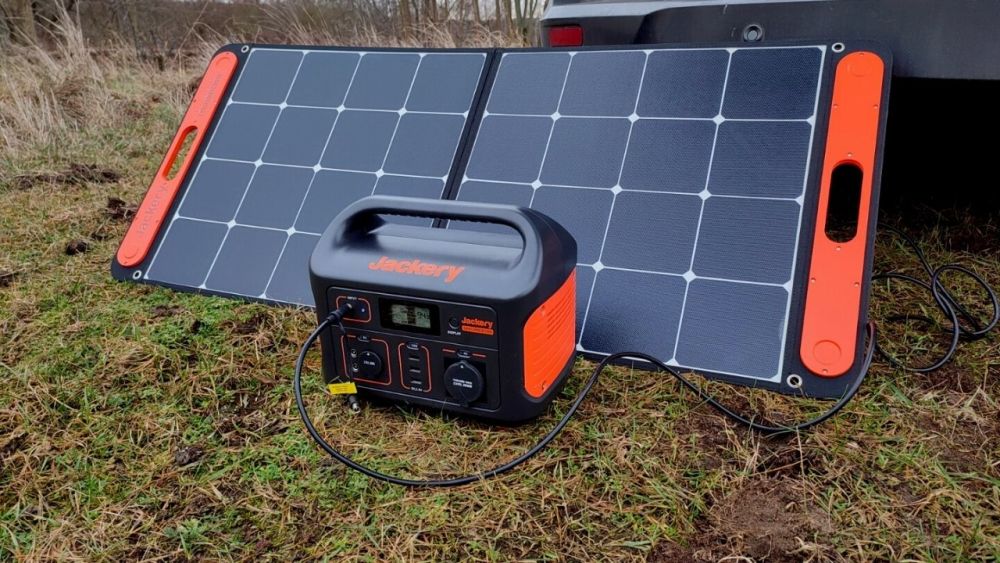Prepper List 2024: What You Need to Survive
Get ready for any emergency with The Prepper List. Don't leave your survival to chance, be well-prepared and secure your future.
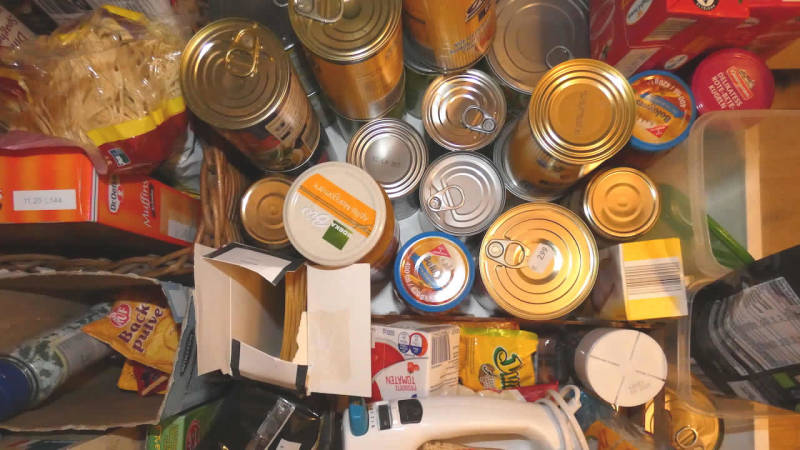

From Martin Gebhardt. Check out my “About me” page.
👉 The key facts from this guide
- Tools: Ensure you have a basic set of tools such as knives, axes, saws, and multitools. Sticky tape, paracord, torches, and cable ties can also be useful.
- Water: Store enough water and have methods of water purification ready, such as purification tablets or water filters.
- Food: Store durable foods such as rice, pasta, oats, canned fish and vegetables, beans, sugar, salt, and honey. Also consider how you could grow your vegetables or catch fish.
- Fire: Have materials for making fires, such as firesteel, flint blocks, lighters, waterproof matches, and fire starters. Candles and lanterns can also be useful.
- Clothing: Prepare for different weather conditions and make sure you have warm clothing. Also think about rain protection like raincoats or ponchos.
- First Aid: Have a first aid kit ready and learn basic first aid skills.
The prepper is well-prepared. This means that you can react to various situations in case of an emergency.
Therefore, I am now presenting my prepper list to you. You will learn what you need to ensure your survival in case of an emergency.
Why you should prepare - Why prepping?
Prepping is rarely as widespread as before. More and more people are preparing for the worst-case scenario.
This way, they are prepared for various disasters and can take appropriate measures. They want to secure their survival and that of their families, if possible.
Three important things at the beginning:
- I would rather not cause panic. You should always consider emergencies with a certain levelheadedness, but seriousness.
- Every prepper list is individual. Everyone has different needs. One has a family, another lives in the countryside, and some even expect a zombie invasion.
- If possible, act in solidarity and support your fellow human beings.
Now let's take a look at the crises that can occur.
Epidemic, Pandemic, or Plague
Emergencies include an epidemic (infectious disease in a country), a pandemic (worldwide infectious disease) or a plague.
The risks of such dangers have increased worldwide recently due to the expanding air traffic.
A virus can spread throughout the world within days.
Especially the coronavirus scares people and it is important to prepare accordingly.

Wars
Similarly, wars pose a threat. In some countries, the situation is insecure, so it is worth being prepared.
It is important to secure oneself well regarding one's own property.
A stable protection against intruders is an important factor - for example, a well-built cellar.
Read here how to prepare for a war as a civilian.
Furthermore, a war may also mean that there is a nuclear threat. In that case, appropriate preparations should be made for this threat. Accordingly, I have a guide that deals with this topic exactly: How to prepare for a nuclear attack - surviving an atomic bomb
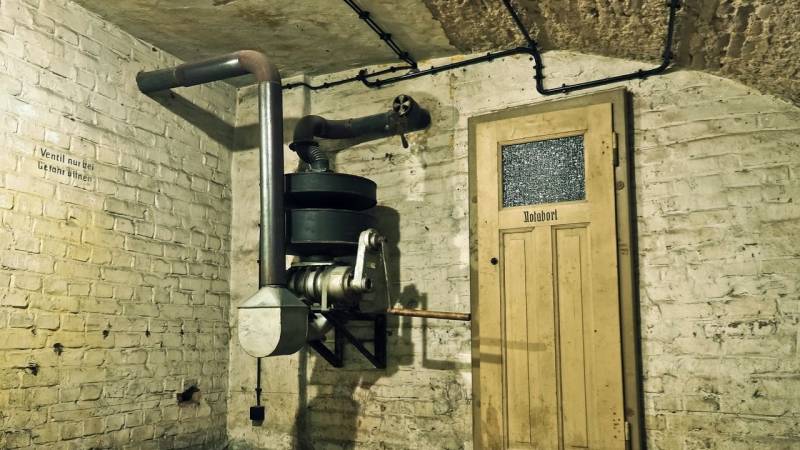
Terrorist attacks
Even terrorist attacks pose a threat to you and your family. For example, an attack on the power grid through an EMP attack or even on a nuclear power plant.
This can also be a hacker attack. As a result, the supply may fail.
Therefore, prepare yourself for self-sufficiency in an emergency.
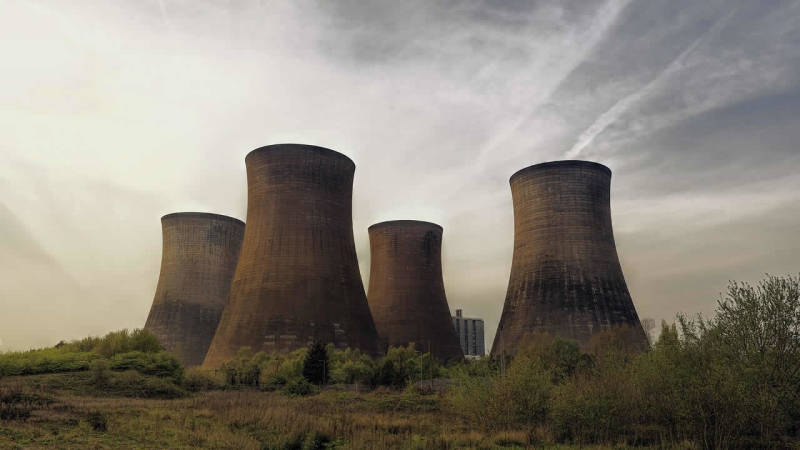
Environmental disasters
And finally, many people are driven by the fear of an environmental disaster.
Floods, tsunamis, droughts, or storms can pose an existential threat in extreme cases. Therefore, it is worthwhile to be prepared for these emergencies and to take the right precautions for protection.
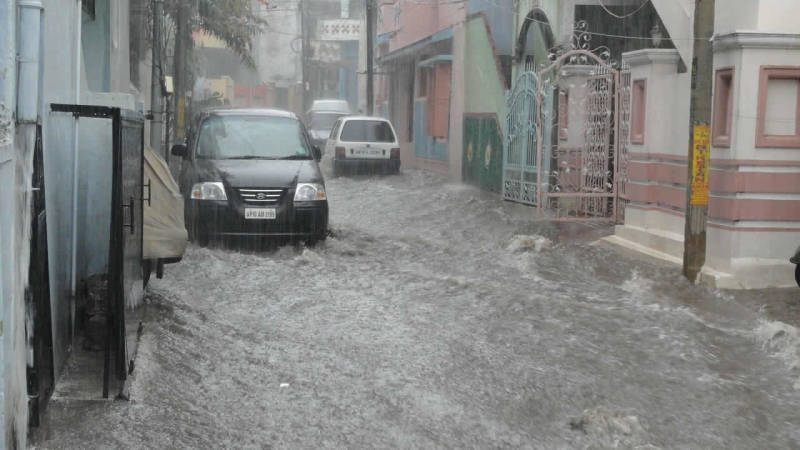
Power outages / blackouts
Blackouts are long-lasting and large-scale power outages. If this happens, we as a society that is heavily dependent on electricity will be in a fatal situation.
Since the topic is so large, I have created a separate guide for it. Read the comprehensive guide to blackouts here.
To ensure that a possible catastrophe does not catch you completely off guard, you design your prepping equipment according to certain guidelines and suggestions.
Experts consider certain factors as the basis for survival. Experienced preppers internalize these lists.
If you follow this prepper list, you can easily increase your chances of survival.
Prepper list: What is essential?
A prepper list includes various components. In general, however, experts distinguish between the elements that are needed as emergency supplies and the equipment that you provide for a possible quick escape or a curfew.
Equipment is needed when you no longer have time to pack the important things together, but have to react immediately.
This is the case, among other things, when your shelter is being overrun. If a large crowd of unauthorized individuals is heading towards your shelter, you immediately grab the bug-out bag and start the controlled retreat.
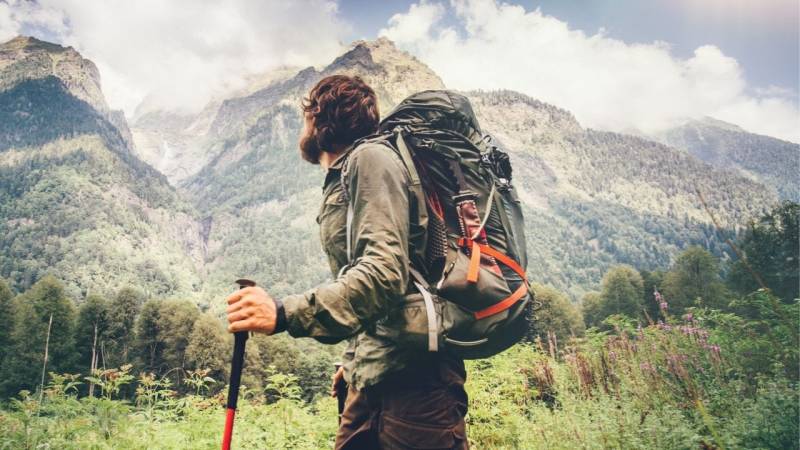
Therefore, it is also crucial that all your family members also have a packed backpack (the bug-out bag) ready.
Because often there is no more time in extreme cases to gather various utensils.
Tools as basic equipment for construction and protection
At the top of the prepping list is the right tool.
Because you need it to build a safe shelter for you and your family. In addition, with high-quality tools, you have the opportunity to repair damage to your shelter.
Tools of good quality are also indispensable for collecting and processing wood, for food preparation, and for starting a fire.
You should look for branded goods here that stand for good workmanship. Because with that, you have the assurance that the tool will last a long time. High-quality tools are stable and easy to use.
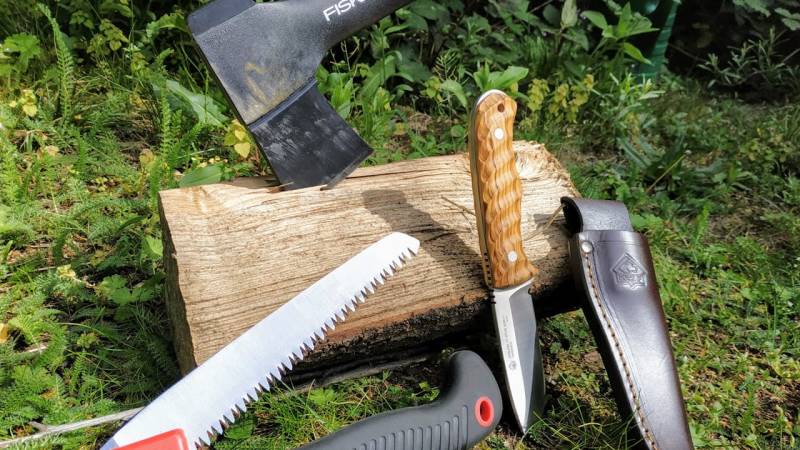
Here is my recommendation for tools:
- Full Tang Knife, robust and durable,
- such as the PUMA IP, here's my review
- such as the Casström Woodsman (review)
- Pocket Knife
- such as the Victorinox Huntsman Pocket Knife (read my review)
- Survival Axe
- such as the X7 by Fiskars, here's my article "The 3 Best Survival Axes
- Pruning Saw / Hand Saw
- such as the BAHCO Laplander or check out my top list
- Multitool / Pocket Tool
- such as the Victorinox Multitool
- Survival Kit
- such as the Survival Kit by Cliff & Cliff
- read my review here: Survival Kit: The Ultimate Guide 2022 (with Video)
Additionally, you should also bring the following equipment:
- Duct tape / gaffer tape / fabric tape (buy it here)
- Paracord (read "What is Paracord?" to learn more)
- LED flashlight (such as the Streamlight Stylus Pro LED flashlight, here's my review)
- Emergency candles (see "Fire" section below)
- Cable ties
- Knife sharpener (check out how to sharpen a knife and what I recommend)
- Scissors
- Nails
- Hammer
- Pliers
Secondly, it is crucial that you ensure basic provisions to increase your chances of survival.
Let's start with the most important element: water!
Water as an Important Provision Element
The secured supply of water is of immense importance because the human body cannot survive longer than three to four days without it.
Plan for a water consumption of about four liters per day per person (2.5 liters per day is the absolute minimum). It's not just about taking in fluids.
It is also important to use water for hygiene and for cooking. The four liters are split up as follows: two liters of drinking water, one liter for personal hygiene/cleaning, and one liter for cooking.
Water is essential to life and is more important than food. Calculate your required emergency water supply per person and per day.
You can store the water in water barrels. This is also a promising way to collect rainwater (Is rainwater drinkable?). Then you can fill it into smaller 30 to 60-liter water cans.
When choosing water cans, make sure they have a large opening and ideally the tap is at the top where no water can get in (this way, the chances are good that nothing will leak out).
Ideally, you can store the water for at least 6 months. Read my guide "How long can water be stored before it goes bad?".

Amazon
Offer
Data updated 10 hours ago
- Rigid, 7-gallon rectangular water container with molded contour grip
- Space-saving design for easy storing and stacking when empty. Spigot cap is reversible for safe storage and transport
- New and improved screw-on vent; hideaway spigot for on-demand water dispensing
- Suitable for outdoors activities and emergency water storage
- NOTE: Prolonged exposure to direct sunlight will cause the water container to degrade and become brittle, increasing the chance of leaks. It is highly recommended to store water containers in cool shaded areas.
$14.97
List Price: $23.36
You must make the water drinkable with purification tablets. This way, you can prevent diseases.
Water purification tablets are an excellent idea. It is also recommended to boil the water before drinking it to kill the germs.

Amazon
Offer
Data updated 10 hours ago
- Two Bottles Of 50 Count Potable Aqua Water Purification Tablets
- Water Treatment Tablets, Providing Water Purification For Camping, Hiking, Traveling And Emergency Water Preparedness Situations
- Potable Aqua Emergency Water Purification Tablets For Drinking Water Are Effective Against Giardia Lamblia When Used As Directed
- Water Purification Tablets Make Questionable Water Bacteriologically Suitable To Drink, Even In Emergency Water Purification Situations.
- Water Treatment Tablets Offer Emergency Water Purification For Hiking, Travel, And Natural Disasters, And Ideal To Keep With Camping Accessories
$15.36
List Price: $16.99
Tip: If a crisis occurs, quick action is required. Fill as much water storage containers as possible.
These include:
- the bathtub,
- all the sinks in your house, and
- all buckets and pots.
If you are on the run, choose your shelter with a view to a possible water supply.
This means, for example, settling near a river or lake. But even in this case, it is important to make the water you want to drink drinkable.
In my article "Survival: the ultimate water guide [finding, collecting, filtering]", you will find everything you need.
Another suitable option is to get water filters in advance. LifeStraw water filters are very popular here.
Take care of a food supply
Almost as essential as fluid intake is nutrition intake. Because even without food, the human body cannot survive.
A few days without food already lead to a significant weakening of the body. And with a weakened organism, you are easily susceptible, can no longer concentrate and get in a bad mood.
So be sure to have a large supply that is sufficient for you and your family. Various items are recommended: Rice is a true classic when it comes to building up a supply. Because rice is particularly long-lasting and easy to prepare. Pasta, flour, and oatmeal are also long-lasting.
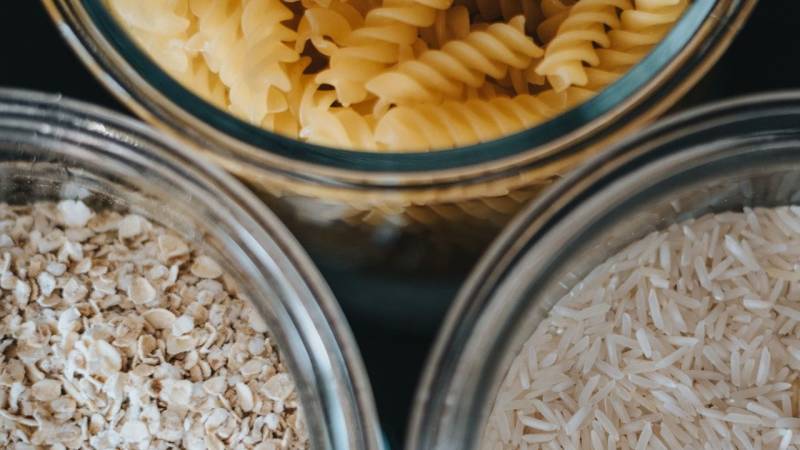
In addition, canned food is a practical option. These are various fruits, but also vegetables.
Beans and other legumes not only score with a shelf life of several years, they also provide you with a good portion of protein. This is particularly important if you do not consume enough meat in emergencies. Rice and beans are a fantastic form of nutrition in a crisis.
You can also rely on so-called MREs or food packs.
These are freeze-dried meals that are long-lasting and can even taste delicious with the right choice. I have tested some of them and can recommend the packages from Tactical Foodpack.
With my coupon code "SURVIVAL10" you even get a 10% discount in the Tactical Foodpack shop.
Fish is also easy to store, at least if you rely on offers from cans. These are sometimes shelf-stable for over five years and provide a suitable option for long-term food storage.
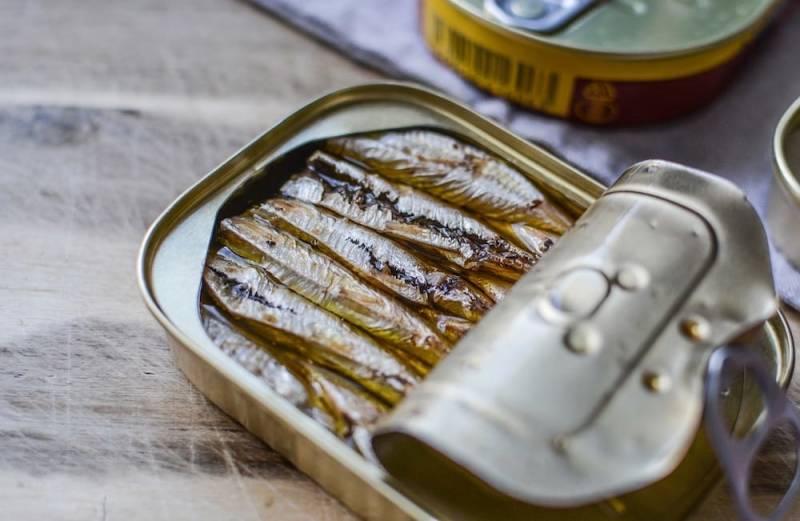
Regarding the cans, you, of course, need appropriate tools. These include, among other things:
- Can opener (e.g., this one)
- Cast-iron pan (e.g., this one)
- Eating utensils (forks, knives, spoons)
- Gas stove (e.g., in a suitcase as a set with 28x gas cartridges)
- Wood stove / hobo stove (read "What is a Hobo?" for this)
- Aluminum foil
- Plates
Sugar and salt are ingredients that are almost indefinitely shelf-stable. Therefore, they should not be missing from your food supply. Furthermore, salt is important for preserving food.
Honey is also a long-lasting item. At first glance, this natural sugar supplier may seem dispensable in your storage. But keep in mind that this natural sweetener is also a good remedy. It is the right helper for throat discomfort, but also suitable for wound care in case of injuries.
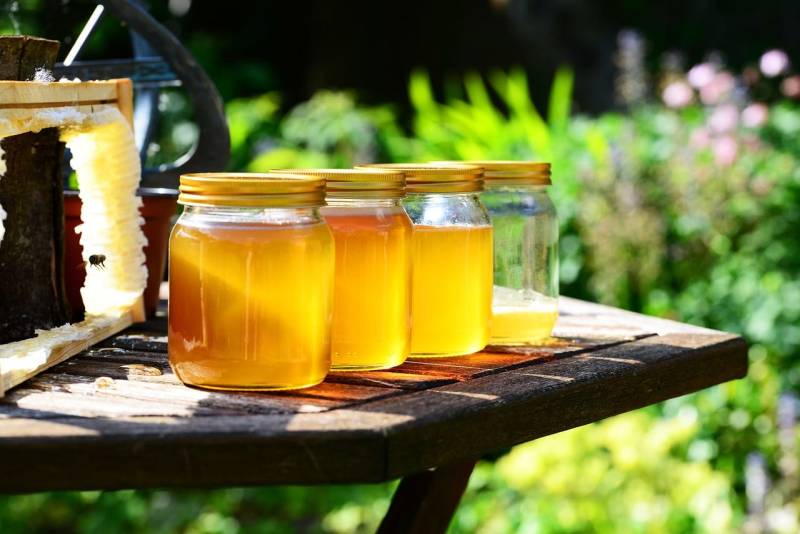
Tip: When storing food in your storage area, rely on the established Fifo system. Fifo stands for "First in, first out".
This means that the food that is stored first should also be consumed first.
You organize the processes as follows: If you manage to get fresh food, then this is stored at the very back of your storage space. The older items are pulled forward on this occasion.
Here is my list of foods that are long-lasting and nutritious:
- Sugar and salt
- Cans of fish and vegetables
- Beans and other legumes
- Rice, pasta, and oatmeal
- Honey
- Milk powder
- Nuts
- Coffee and tea
- Flour
- Energy bars
Reading tips to dive deeper: "The Best Survival Foods (10+ Years Shelf Life)".
Self-sufficiency with Vegetables
If you have a green space available, it is advisable to use it for growing food. You don't need a special green thumb for this.
It's best to focus on simple vegetable varieties that are easy to grow and grow quickly. The following are recommended:
- Radishes
- Carrots
- Lettuce
- Beets
- Zucchini
I recommend 16 fast-growing vegetable plants for a crisis. However, water needs to be factored in for growing these vegetables.
In my guide to your own self-sufficient garden, you will find all the basics for a successful harvest.

Please keep in mind the following equipment for self-sufficiency:
- Seeds of vegetables (buy here, available in sets)
- Garden hoe (e.g., the one from Gardena)
- Trowel / small shovel (e.g., the Fiskars trowel)
- Garden spade (e.g., Fiskars garden spade)
- Garden shears (e.g., Fiskars bypass garden shears)
- Rake (e.g., Fiskars rake with 14 tines)
Self-sufficiency with Fish and Meat
What happens when your food supplies run out?
Then you need to know how to hunt and fish. And also how to process the fish and meat. So, acquire this knowledge.
Here's my list for basic equipment:
- Hunting
- Binoculars
- Slingshot
- Crossbow
- Bow
- Trap building
- Fishing
- Fishing rods
- Reels
- Fishing line
- Fishing bait
Reading tip: 5 Fishing Techniques for Your Survival Toolkit - Catching Fish Without Modern Equipment.
Fire as an Important Element for Your Shelter
A fire is important for your camp for several reasons. On the one hand, a fire and several candles provide good lighting for the area. This is a big advantage in twilight conditions and at night during a possible power outage for an extended period of time.

A blazing fire will also deter animals that are searching for food. To actively keep them away, use torches.
But fire is also important for preparing food. You can roast meat and other items, or warm up beans and similar ingredients. A fire is also necessary for boiling water.
If you find yourself in an emergency during the cold season or for a long period of time, you can use a campfire and stones warmed by the fire as sources of heat. This can prevent frostbite.
Here is my list for basic equipment:
- Firesteel (e.g., Swedish FireSteel 2.0 Army, here is my top list + buying guide)
- Flint blocks (e.g., The Friendly Swede - 3er-Set Flint blocks)
- Lighter (use high-quality BIC lighters)
- Waterproof matches (e.g., Coghland's waterproof matches)
- Fire starter (e.g., Fatwood or chemical fire starters)
- Torches (e.g., 80 min. wax torches)
- Candles (e.g., candle lanterns)
- Lantern (here is my top list)
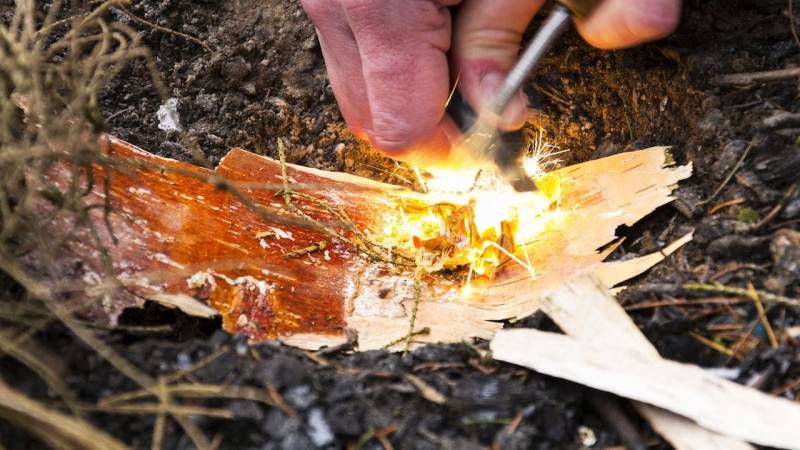
Also read: "How to quickly and easily ignite a fire with a Firesteel (instructions + video)".
Putting together the right clothing
Prepper clothing requires different demands. It is important that the clothing keep the body warm.
Because in an emergency, heating systems may fail (but there are great heating alternatives). Even if you are outdoors in nature, you need to keep your body warm. This is especially true for the night.
Since you probably have many textiles that you rarely wear, packing your backpack is easy. Simply set aside little-worn clothing items early to use in an emergency.
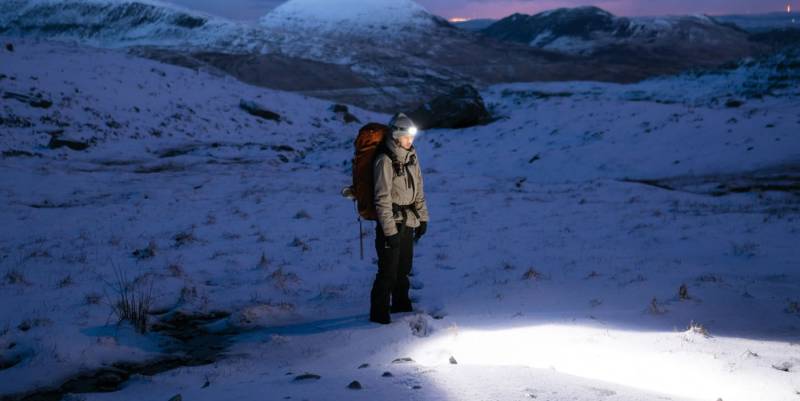
But keep in mind that the clothing doesn't have to look fancy or trendy. It has only one purpose: to secure your survival!
You should also realize that you may have to wear the clothing for a long period of time. Changing clothes is not always possible. That's why thermal clothing is a good choice.
Definitely lay out textiles that can be worn on top of each other. This creates the layered look, which warms the body. The cold doesn't come through the different layers too quickly, and you won't freeze.
Jeans are a good choice for pants. These models are particularly resistant and robust.
Tip: It's an advantage if you can repair your clothing. Those who are skilled here can easily patch holes and other textile issues in times of crisis. It's best to train your skills before the crisis hits.
Protection from rain
To be prepared for different weather conditions, consider a rain jacket or rain poncho.
Here is my recommended basic equipment:
- Rain and wind jacket
- e.g., the Höhenhorn Rigi rain jacket
- Rain poncho
- e.g., the AWHA rain poncho
- Rubber boots
- e.g., Dunlop rubber boots
In this context, rubber boots are also important. And since the body gives off a lot of heat through the head, a hat is a must-have.
When prepping, make sure to pay attention to appropriate footwear. Lightweight sneakers or thin fabric shoes are definitely the wrong choice.
You need sturdy boots and all-weather boots. These provide good grip on almost any surface.
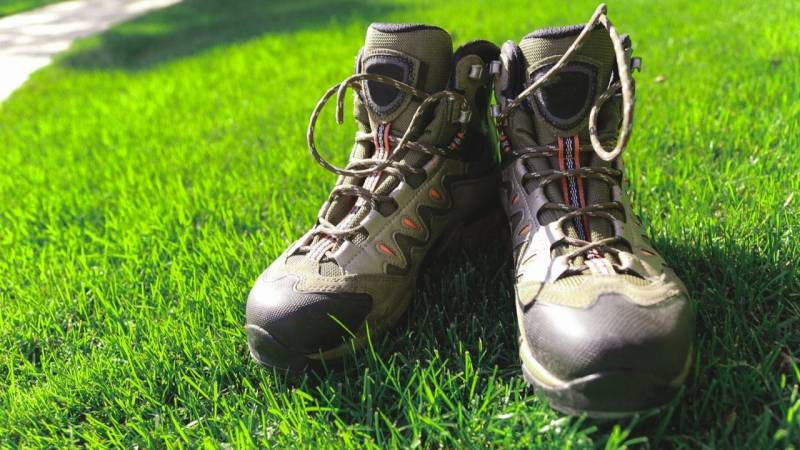
Make sure that the models have a sturdy sole. Breathable properties are also important.
For cold days, boots with a soft and warm lining are essential. The firm lacing guarantees optimal fit of the footwear.
Clothing for an epidemic or a pandemic
If you want to prepare for an epidemic or a pandemic, you need protective clothing and respiratory masks.
During the winter of 2009/2010, pharmacies were already prepared for the "swine flu" H1N1 with various respiratory masks.
In 2020/2021, preparations were made for the Coronavirus.
What can help you:
- Respiratory masks with FFP3 / P3 protection level (e.g., buy here, most effective against viruses)
- Half-mask body with replaceable filter (buy here)
- Surgical mask (buy here)
- air-independent systems in your rooms
Attention: A surgical mask helps very little against viruses (e.g., against the Coronavirus / SARS-CoV-2). Read more at the Robert Koch Institute about protective measures with a hygiene mask / surgical mask.
Do particle masks protect against the Coronavirus?
Yes, much better than a surgical mask.
According to experts, only particle masks can protect against infection from droplets.
The masks are also called particle-filtering half masks (filtering face piece, FFP). The FFP masks are available in the versions FFP1, FFP2 and FFP3.
FFP3 masks provide the most effective protection against viruses. FFP1 and FFP2 do not provide quite as much protection.
Here is a list of the different levels (source):
- FFP1: Total leakage (leakage) is a maximum of 22%, at least 80% of pollutants are filtered out of the air.
- FFP2: Total leakage (leakage) is a maximum of 8%, at least 94% of pollutants are filtered out of the air.
- FFP3: Total leakage (leakage) is a maximum of 2%, at least 99% of pollutants are filtered out of the air.
Don't forget to bring disinfectant.
Material for shelter
Those who have to leave their homes during a catastrophe need equipment for sleeping accommodations. A small, simple tent is a good choice.
A tarpaulin or a tarp is also suitable, which you can set up on sticks or attach to trees. As sleeping gear, sleeping mats, sleeping bags or a hammock are essential. A rescue blanket or thermal blanket is also a practical tool.
Here's the prepper list for shelter:
- Tarp / tent tarp
- e.g., the Unigear tarp (here's my top list + buying guide)
- Tent
- read my ultimate tent buying guide
- Sleeping mat
- Sleeping bag
- e.g., EXPLORER sleeping bag up to -23 degrees, but better check out my top list + buying guide
- Rescue blanket
- Gas heater
- e.g., this gas heater
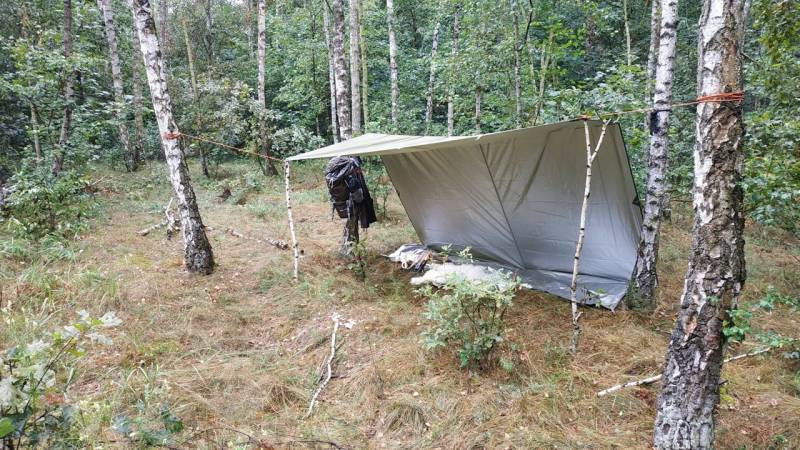
When building a fireplace, make sure to keep a distance from the sleeping area. Furthermore, secure the fire with a border of large stones to prevent uncontrolled spreading of the fire.
If you really have to flee without your equipment, then read beforehand: "The 7 most important survival tips for survival". Learn this knowledge absolutely!
Securing Means of Transportation
In times of crisis, a quick escape may be necessary. Preppers are prepared for this. They always keep an eye on their surroundings and make sure that escape routes are usable.
Various vehicles are preferred as means of transportation. The car has the advantage of transporting several people at once. Therefore, families prefer this type of transportation.
Preppers who are really dedicated build their caravan or motor home (read my guide to motor homes here) during safe times. With this, you are flexible (as long as there is gasoline) and have a roof over your head.
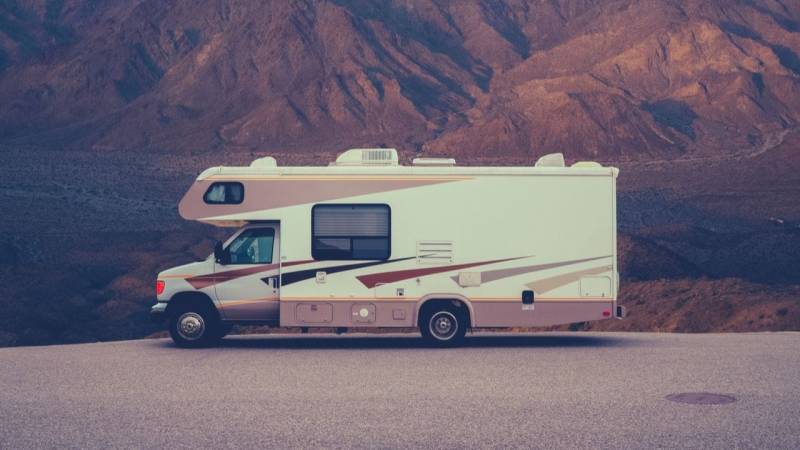
You are more flexible with a motorcycle. This allows you to easily avoid traffic jams and busy roads. However, a motorcycle is almost useless in winter with snow.
But remember, for both types of transportation, you need sufficient fuel such as gasoline or diesel (don't forget fire extinguishers and fire blankets). And these are not unlimitedly available.
The bicycle is a suitable alternative. You operate it only with your muscle power. It is best to provide a model that is particularly robust and has sturdy tires.
Some preppers equip their bicycles with a bicycle trailer. This way, you can even transport your equipment quite well.
Read also
What you need to know about long-term storage of gasoline (shelf life, regulations, tips) – Long-term storage of gasoline requires careful consideration to ensure that it is safe, effective, and legal. What do you need to consider?
Medicine and Hygiene
Every prepper is prepared with the basic medicines in case of illness.
These include:
- Painkillers (such as ibuprofen, aspirin)
- An antibiotic
- Paracetamol for fever
- Preparations for diarrhea (such as Imodium)
- Antihistamines for allergies (click here for more information)
You can read on managing your medications and lots of information on medications in my article "Medications for Preppers - Your Home Pharmacy for a Crisis".
Your first-aid kit should definitely include gauze bandages and bandages. Here is the basic equipment of a good first-aid kit:
- Gauze bandages (such as 20 pieces Gauzes)
- Compresses (such as sterile compresses)
- Plasters (such as plasters in one piece)
- Scissors
- Tourniquet binding system (such as here in a pack of 2)
In my article "First Aid Kit: Putting Together and Applying", I describe in detail what should be included in your first-aid kit, how to treat injuries, and how to make a pressure bandage.
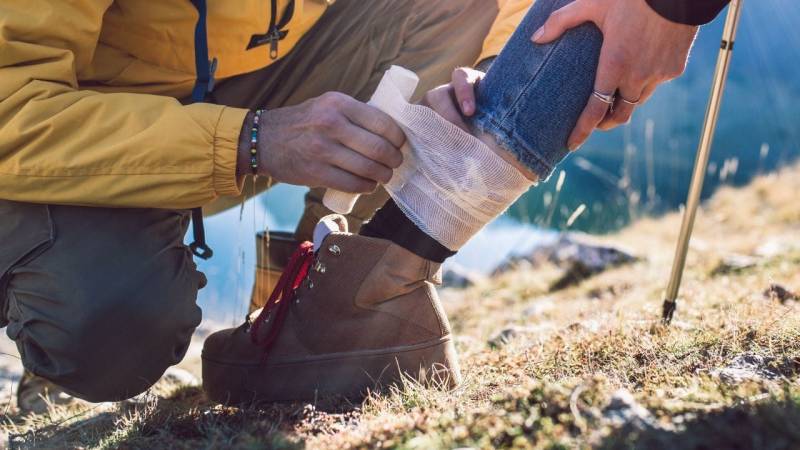
The essential hygiene items include:
- Toilet paper
- Oral hygiene products
- Bar soap
- Sanitary pads, tampons, feminine hygiene products
I have written a detailed guide on outdoor hygiene.
Pro Tip
I can recommend the BOXIO separating toilet, which I own myself. It is cheap, can be stored easily, and most importantly: it is hygienic and odorless. For me, it is the perfect alternative to chemical toilets. Plus, I can also use it for camping.
Orientation, Navigation, and Communication
Preppers often want to be alone because they fear for their supplies.
However, I do not recommend this because being alone will not help you survive in an emergency for long. A well-coordinated group with a lot of prepper-survival knowledge is almost invincible.
To stay in contact with other people and know how to navigate, I recommend the following equipment:
- Solar radio with battery and crank
- For example, the Sangean MMR-88 DAB+ portable crank radio (FM/DAB+)
- Here you can find my top list and buying guide for crank radios
- Compass
- For example, the Suunto compass
- GPS navigator / handheld navigation device
- For example, the Garmin GPSMAP 64s
- Maps
- Two-way radios
- For example, the Motorola TLKR T80
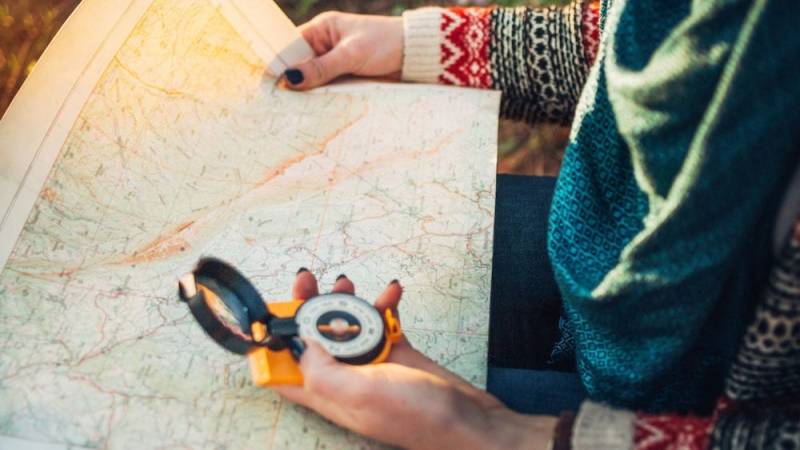
Knowledge of navigation with a compass and determining directions is essential for survival.
Take a look at my article "How to determine directions using the shadow" and my fundamental article "Navigation and orientation without a compass".
The thing about electricity
I understand that some preppers want to be independent of electricity. Because our dependence on electricity is great, we charge batteries and use it to power lights, ovens, and other electrical devices.
However, if you cannot do without your flashlight or radio, you can generate your electricity.
With the equipment listed here, you can recharge your batteries and power your devices.
Here's my list and a selection for smart preppers:
- Batteries (for example, POWEROWL, 1200 cycles, 2800 mAh)
- Battery charger (for example, USB battery charger for AA, AAA)
- Power bank (for example, the Anker Powerbank, 26,800mAh or 20,100mAh or check out my top list)
- Solar panels: take a look at my top list
- Power station with solar module: refer to my top list
Pro Tip: If you're traveling in a camper van or staying in a fixed dwelling, use wind and water power to generate electricity.
And if you're at home and the power goes out, and your heating stops working, then read my article "9 ways to stay warm without electricity and heating".
Conclusion: These are the elements included in the prepper list
To be prepared for almost any emergency and to survive a disruption in supply, focus on having enough food. Store food and mainly use canned food. Legumes and canned fruit are suitable options (learn here how to build up a stockpile on a small budget).
You ensure your water supply through direct access to a lake or river. Stored supplies in water barrels are a sensible option. Be sure to think about ways to purify water.
In this context, fire is important for boiling water. In addition, fire is necessary to create a warm environment and to deter animals.
Equip yourself with sturdy tools that have a long lifespan. These are the elements you need to build a shelter or secure your surroundings.
Preppers who internalize this list are well-prepared for emergencies!
Questions and answers about prepping
✅ What is prepping? The term "prepping" comes from English. It derives from the attitude of always being prepared: Be prepared! This has led to a scene of people who prepare for various catastrophic situations through individual measures.
✅ How did prepping come about? The roots of prepping can be traced back to the American Civil War in the 19th century. At that time, there was a shortage of food, forcing people to create their own supplies and safeguards.
✅ What emergencies can occur? These can include: power outages, diseases such as viruses and bacteria, nuclear accidents, economic collapse, terrorist attacks, cyberattacks, electromagnetic pulse, wars, natural disasters such as floods, storms, droughts, earthquakes.
✅ How do preppers prepare? By stockpiling food and water, building shelters or protective devices on existing buildings, holding protective clothing, tools, radios, medicines, and other things. Many preppers are knowledgeable in Bushcrafting and survival training.


Author of the guide
Martin Gebhardt
Hey, I'm Martin. On my blog, you will learn the basics and numerous details about living in the wild. I think survival, bushcraft and the good life in nature are the keys to happiness. Find me here on Instagram or on YouTube. You can find more about my mission on the About Me page.
Was this guide helpful?
180 people found this guide helpful.
4.83 out of 5 points (188 Ratings)
Comments (0)
This post may contain affiliate links. So if you click on the links and make a purchase, I will receive a small commission at no additional cost to you. Click here, to learn more about it.





